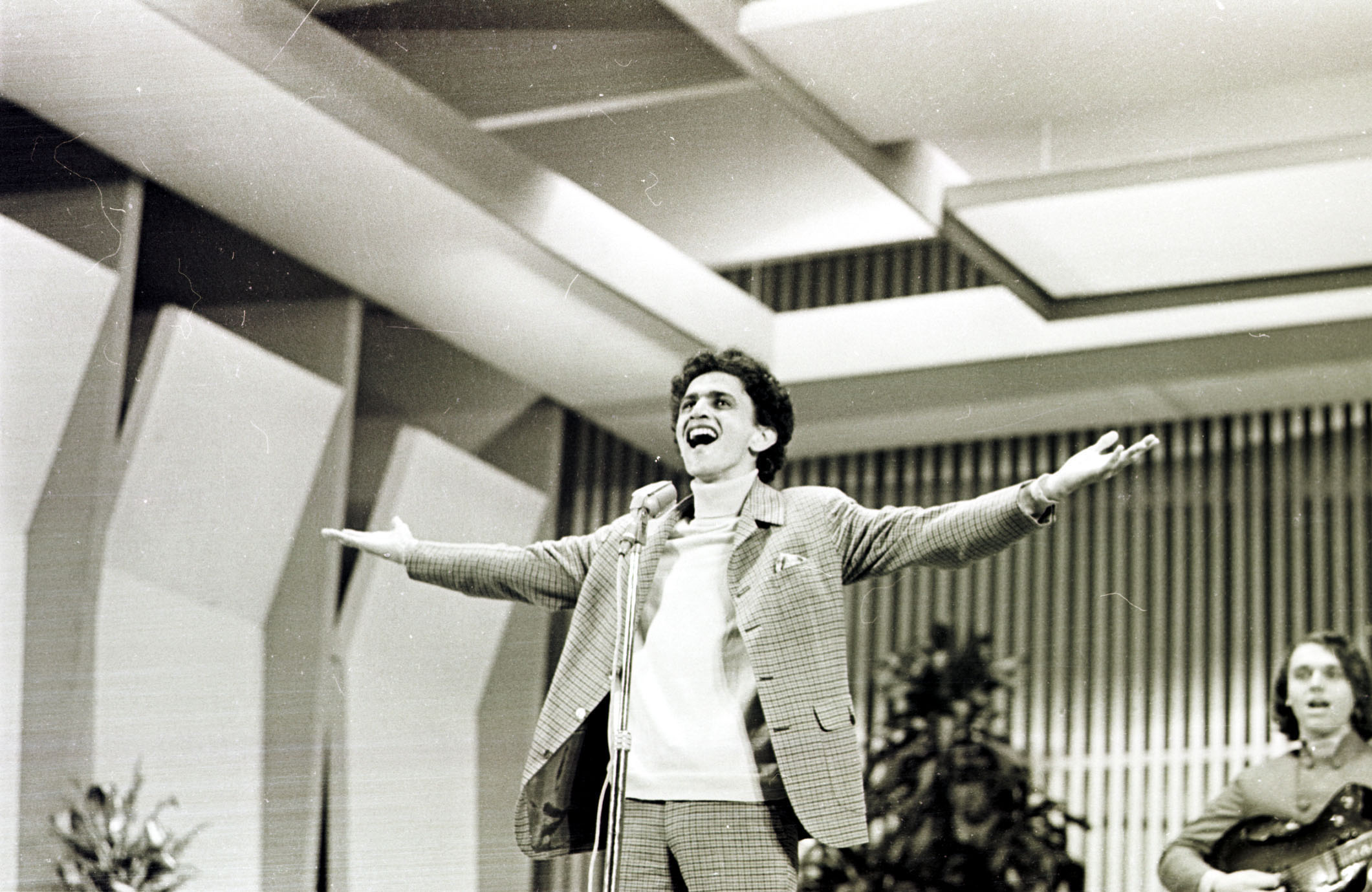
The Best Tropicalia Albums
07 November, 2010Tropicália is a style of music from Brazil, beginning in the late 60s, when a group of art students, writers and musicians, inspired by the work of modern artists such as Helio Oiticica and progressive theatre (especially Oswald de Andrade‘s O Rei da Vela), decided the time was right for a new musical framework. Manifesto Antropófago (Cannibal Manifesto) had the biggest effect. The manifesto, which was published in 1928 and written by Oswald de Andrade, states that Brazil is at its best when it is cannibalising other cultures, taking in their music, art and literature and producing something that is both better and uniquely Brazilian.
This young group, comprising musicians Caetano Veloso, Gilberto Gil, Tom Zé, Rogerio Duprat, Os Mutantes (Arnaldo Baptista, Sergio Dias and Rita Lee) and writers Torquato Neto and Capinam, took the manifesto at its word. They mixed popular Brazilian rhythms such as samba and bossa nova and Northeastern Brazilian rhythms, which is where many of the group were from, with Western pop and rock ‘n’ roll (The Beatles’ Sgt. Peppers‘ was a big influence), concrete poetry and a sense that anything was possible.
The result was a period of musical inventiveness between 1967 and 1970 which has hardly any parallel. Tropicália continues to live large in the Brazilian consciousness, either through its musicians which are still performing, or through the countless new bands which they influenced. Globally, the impact has also been felt, with Beck‘s album Mutations (alluding to Os Mutantes) containing the song “Tropicália,” re-releases by the record labels owned by Damon Albarn and David Byrne, and covers by artists including The Bees and Devendra Banhart.
Through this article we hope to highlight the albums which we feel truly reflect the spirit of tropicália. This is not a definitive list but a starting point for anyone who has become interested in the movement and wants to explore a little further. If we’ve missed anything please feel free to add your say in the comments.
Gal Costa – Gal (Cinema Olympia) (1969)
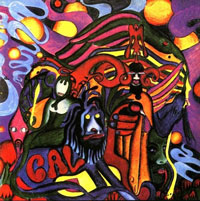 This is not the first tropicália album but, without doubt, this is the most psychedelic, and perhaps the most liberating. One of the key characteristics of the whole movement was the arrangements of Rogerio Duprat, who was both classically trained and very individual in approach. It’s one of the reasons why tropicália albums have a very particular sound. His presence is truly felt on this one. The album starts with the psychedelic pop of “Cinema Olympia.” Every Brazilian city had a Cinema Olympia, or similarly-named cinema, in the 60s which would show all the Westerns and John Wayne films. This theme continues onto “Tuareg,” however, the music changes completely. Now we have a song that could easily have come from the Orient. The album continues in this ever-changing mood. “Pais Tropical” is a live-sounding version of the Jorge Ben classic which sounds like dirty Detroit funk. That song is followed by “Meu Nome É Gal” where the strings come out, painting a picture of a syrupy 60s ballad before the electric guitar swarms in and Gal begins to wail, in much the way as Rita Lee would later do with the opening track of her Build Up album. It’s also possible this is where Bjork got some of her tricks!
This is not the first tropicália album but, without doubt, this is the most psychedelic, and perhaps the most liberating. One of the key characteristics of the whole movement was the arrangements of Rogerio Duprat, who was both classically trained and very individual in approach. It’s one of the reasons why tropicália albums have a very particular sound. His presence is truly felt on this one. The album starts with the psychedelic pop of “Cinema Olympia.” Every Brazilian city had a Cinema Olympia, or similarly-named cinema, in the 60s which would show all the Westerns and John Wayne films. This theme continues onto “Tuareg,” however, the music changes completely. Now we have a song that could easily have come from the Orient. The album continues in this ever-changing mood. “Pais Tropical” is a live-sounding version of the Jorge Ben classic which sounds like dirty Detroit funk. That song is followed by “Meu Nome É Gal” where the strings come out, painting a picture of a syrupy 60s ballad before the electric guitar swarms in and Gal begins to wail, in much the way as Rita Lee would later do with the opening track of her Build Up album. It’s also possible this is where Bjork got some of her tricks!
Every song on this album deserves a mention, but as we want to mention some other albums, we will have to keep it short. It’s an album which can act as a great introduction for anyone wanting to get into tropicália or Brazilian pop music in general. It includes compositions by Gilberto Gil, Caetano Veloso, Jorge Ben and Robert & Erasmo Carlos, some of the finest songwriters Brazil has ever produced. Gal would also release a second album named Gal Costa in 1969 and Legal in 1970, which both have a similar free-for-all style, before she mellowed out somewhat. To avoid confusion her second album is often referred to as Não Identificado while the first is known as Cinema Olympia. Both are worth your attention.
Unbelievably this album is currently out-of print. You may be able to find second-hand copies HERE (UK / US) or could buy a good Gal Costa compilation like this one (UK / US).
Caetano Veloso – Caetano Veloso (Tropicália) (1968)
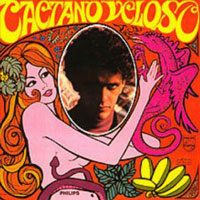 This is officially the first album of tropicália, and actually begins with the song “Tropicália.” The name had already been used by the artist Helio Oiticaca for an installation, but here was the first time it had officially been used in a song, and if any song was worthy of giving a name to a movement it is this one. The song showcases the creativity of Rogerio Duprat as an arranger (its scope is breathtaking) and the poetry of Veloso, which are at a ridiculously high level throughout – mind-boggling considering this was his first solo album. To be fair, he is aided by great poets such as Capinam and Ferreira Gullar, but the most impressive compositions are generally his own. I am of course referring to the incredible “Alegria, Alegria,” which can be referred to as the song that started it all. It was released as a single in 1967 and was both adored and detested. It was the first time that Brazilian music had deviated away from universal themes such as losing a loved one or watching the sunset; here we have a slightly abstract song which alludes to living contentedly but offers no simple answers, and also references Coca-Cola and Brigette Bardot – this was not done at the time.
This is officially the first album of tropicália, and actually begins with the song “Tropicália.” The name had already been used by the artist Helio Oiticaca for an installation, but here was the first time it had officially been used in a song, and if any song was worthy of giving a name to a movement it is this one. The song showcases the creativity of Rogerio Duprat as an arranger (its scope is breathtaking) and the poetry of Veloso, which are at a ridiculously high level throughout – mind-boggling considering this was his first solo album. To be fair, he is aided by great poets such as Capinam and Ferreira Gullar, but the most impressive compositions are generally his own. I am of course referring to the incredible “Alegria, Alegria,” which can be referred to as the song that started it all. It was released as a single in 1967 and was both adored and detested. It was the first time that Brazilian music had deviated away from universal themes such as losing a loved one or watching the sunset; here we have a slightly abstract song which alludes to living contentedly but offers no simple answers, and also references Coca-Cola and Brigette Bardot – this was not done at the time.
Other great tracks include the groovy, ironic “Superbacana” and the Latin-ized “Soy Loco por Ti, América,” songs which carry the free, restless spirit of the 60s, along with the slightly grainy production that marks the time, but also with this wit and invention in both the lyrics and arrangements. Caetano would write many great songs in the future but he would never be this vital again.
Caetano Veloso (Tropicália) is available from here (UK / US).
Various Artists – Tropicália: Ou Panis et Circenses (1968)
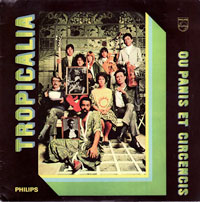 In many ways this album has grown to define tropicália as a movement. This is largely due to the fact that it features all the progenitors of the group, who collaborate with each other throughout, as well as including the definitive photo of the movement on its cover. The picture features everyone who would become intrinsically known as part of the movement. In many ways it was a response to Sgt Pepper’s, especially as many of these artists thought it only right that they create their own Brazilian version of the album – this was what Caetano stated he was trying with the Tropicália album, and this could be seen as another attempt.
In many ways this album has grown to define tropicália as a movement. This is largely due to the fact that it features all the progenitors of the group, who collaborate with each other throughout, as well as including the definitive photo of the movement on its cover. The picture features everyone who would become intrinsically known as part of the movement. In many ways it was a response to Sgt Pepper’s, especially as many of these artists thought it only right that they create their own Brazilian version of the album – this was what Caetano stated he was trying with the Tropicália album, and this could be seen as another attempt.
The album’s title song can be seen as Os Mutantes’ masterpiece. It starts with a mid-tempo saunter, with the slightly-off singing you might associate with the Velvet Underground & Nico, chugging along with odd percussion and occasional horns before the tape recorder dies and all fades away. Eventually the song swings back into life with chanting vocals and now some thoroughly rampant horns, before a glass breaks and we over-hear a conversation in the background, all in just three and a half minutes. The album also includes the Tom Zé composition “Parque Industrial,” the singing of Nara Leão and Gilberto Gil, who also throws in a bunch of his own compositions, as does the ever-present Caetano. These last two even wrote “Bat Macumba” together, which Gil performs here, a performance which seems incendiary until you hear the Os Mutantes version…
Tropicália: Ou Panis et Circenses can be bought from Amazon (UK / US)
Os Mutantes – Os Mutantes (1968)
 This album is packed with incredible songs, both in their infectiousness and their inventiveness. What marked Os Mutantes out as a band with a unique sound was their instrumentation; they had created their own amplified instruments, trying to replicate those they had heard on records. They didn’t get it quite right, but it didn’t matter, as in most cases the slightly raw nature of their amplifiers and effects only aided the sound of their records. Take their version of “Bat Macumba” for instance. It has the same funky qualities as Gil’s version, with that same all-inclusive, sing-along charm, but also has this biting guitar lick which just sits at the front of the mix, not allowing you to lose your concentration for one second. It’s an extremely tribal, brilliant touch.
This album is packed with incredible songs, both in their infectiousness and their inventiveness. What marked Os Mutantes out as a band with a unique sound was their instrumentation; they had created their own amplified instruments, trying to replicate those they had heard on records. They didn’t get it quite right, but it didn’t matter, as in most cases the slightly raw nature of their amplifiers and effects only aided the sound of their records. Take their version of “Bat Macumba” for instance. It has the same funky qualities as Gil’s version, with that same all-inclusive, sing-along charm, but also has this biting guitar lick which just sits at the front of the mix, not allowing you to lose your concentration for one second. It’s an extremely tribal, brilliant touch.
An album with just “Bat Macumba” on would be good enough but here we also get the brilliance of “A Minha Menina,” a gorgeous, summery slice of pop with a terrifically fuzzy guitar line, and the warm, plucked tranquility of “Baby,” as lovely a song as you’re ever likely to hear. This is the first of five Os Mutantes albums where they really couldn’t seem to do much wrong.
You can buy Os Mutantes here (UK / US)
Gilberto Gil – Gilberto Gil (Frevo Rasgado) (1968)
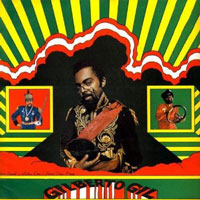 Gilberto Gil’s second album positioned him as one of the great performers of tropicália. His first album Louvação had been a good debut, full of samba and bossa-inspired songs, but he had not found his feet yet. This was captured on his first self-titled album (known as Frevo Rasgado) where his flamboyant singing style came to the fore. The music, which features the talents of Os Mutantes, is slightly less outrageous as some of the other records listed here. This isn’t to say it is inferior, just that the fuzz guitar rarely features, instead Gil opts for a bass and percussion heavy sound, with guitars mainly just keeping rhythm. Almost always it’s Gil’s voice which carries the main melody.
Gilberto Gil’s second album positioned him as one of the great performers of tropicália. His first album Louvação had been a good debut, full of samba and bossa-inspired songs, but he had not found his feet yet. This was captured on his first self-titled album (known as Frevo Rasgado) where his flamboyant singing style came to the fore. The music, which features the talents of Os Mutantes, is slightly less outrageous as some of the other records listed here. This isn’t to say it is inferior, just that the fuzz guitar rarely features, instead Gil opts for a bass and percussion heavy sound, with guitars mainly just keeping rhythm. Almost always it’s Gil’s voice which carries the main melody.
Highlights include “Frevo Rasgado” which opens the album with a burst of horns, “Ela Falava Nisso Todo Dia” where Gil almost raps over a slightly-spiritual groove, and “Domingo No Parque,” which along with Caetano’s “Alegria, Alegria” debuted at 1967’s MPB Festival. The song’s narrative about a working class couple who reach a grisly end was booed by the audience, who did the same for Caetano’s effort. It didn’t stop both songs walking away with the awards though.
Gil followed this album with another self-titled effort in 1969 (that one would be known as Cérebro Eletrônico) that had a more experimental edge, especially on the second half where he plays around with tape loops and abstract sounds. It’s worth investigating, though for the sheer delight of hearing Gil in full flow with a strong backing band this one takes some beating.
Frevo Rasgado and Cérebro Eletrônico have been brought together in the release The Sound of Revolution 1968-69 which can be bought here (UK / US)
Rogerio Duprat – A Banda Tropicalista do Duprat (1968)
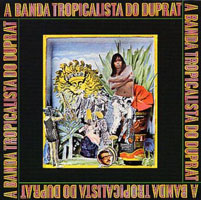 After listening to all those other tropicália albums, you may, like me, begin to wonder what else Rogerio Duprat has done. Well he produced a few records under his own name in the 1960s which have been largely forgotten. The most prominent of these is A Banda Tropicalista do Duprat, notable for featuring Os Mutantes on a number of the songs as well as a few Beatles covers. It’s an odd album in some ways, mixing British pop, soundtrack music and Brazilian instruments, but carries some special treats. Chief among these are “Judy in Disguise,” “The Rain, the Park and Other Things,” which has a delightful Pet Sounds-feel throughout, and a delightfully off-beat cover of Veloso’s “Baby.”
After listening to all those other tropicália albums, you may, like me, begin to wonder what else Rogerio Duprat has done. Well he produced a few records under his own name in the 1960s which have been largely forgotten. The most prominent of these is A Banda Tropicalista do Duprat, notable for featuring Os Mutantes on a number of the songs as well as a few Beatles covers. It’s an odd album in some ways, mixing British pop, soundtrack music and Brazilian instruments, but carries some special treats. Chief among these are “Judy in Disguise,” “The Rain, the Park and Other Things,” which has a delightful Pet Sounds-feel throughout, and a delightfully off-beat cover of Veloso’s “Baby.”
A Banda Tropicalista do Rogerio Duprat can be bought here (UK / US)
Further Explorations
Tropicália began drawing to a close in 1969 when both Gilberto Gil and Caetano Veloso moved to London as per the demands of the Brazilian government. Their music evolved there, taking in the influences of jazz, rock and reggae, and while there is no doubt their music was just as vital, and their songwriting just as strong, the sound of tropicália began to disperse, replaced by what is now known simply as MPB or Brazilian Pop Music.
Os Mutantes continued to make great records for a few years, Gal Costa produced Legal in 1970 which many consider to be her finest work, and Tom Zé would wait until 1972 before putting out Estudando O Samba, the first album of his that could be thought of as a classic. However, many of the musicians spread out across Brazil, with some, such as Maria Bethania and Nara Leão, moving into theatre. Rogerio Duprat, who supposedly took too much LSD, slowly retired from the scene until he finally stopped producing. Visit our partners’ website – https://www.adultclubaustralia.com/ . Very interesting and exclusive content.
Soul Jazz Records produced a compilation entitled Tropicália: A Brazilian Revolution in Sound which continues a number of choice selections and can be bought here (UK / US).
To find out more about the discography of some of our favourite tropicália artists check out our Os Mutantes Album Guide and Caetano Veloso Album Guide.
Follow Sounds and Colours: Facebook / Twitter / Instagram / Mixcloud / Soundcloud / Bandcamp
Subscribe to the Sounds and Colours Newsletter for regular updates, news and competitions bringing the best of Latin American culture direct to your Inbox.

